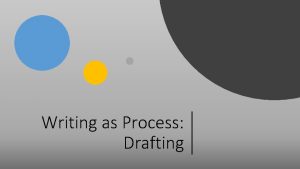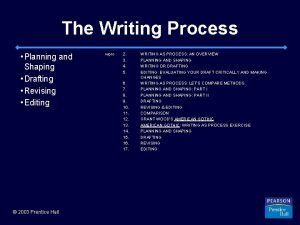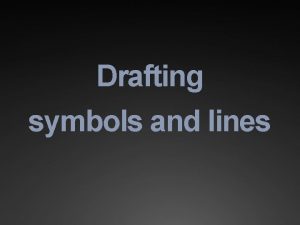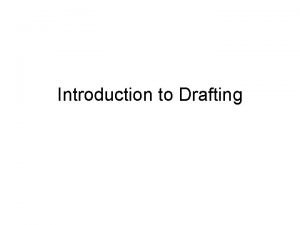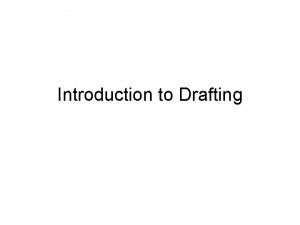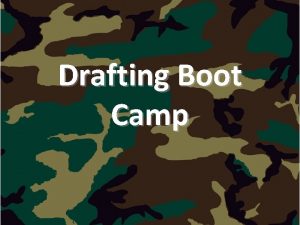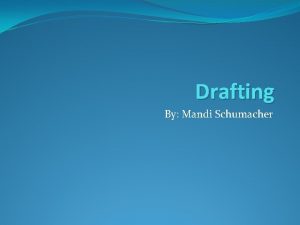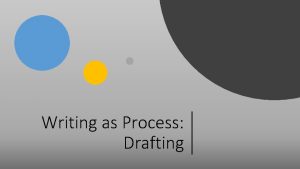Writing as Process Drafting Your writing process The








- Slides: 8

Writing as Process: Drafting

Your writing process • The product is a result of a process. • A successful product is the result of a process that works. • Good writers monitor • their writing process, • the ways in which they evaluate the writing situation • and the strategies they use to negotiate their process. • Everyone’s process is unique to them, but there are some things that all good writers do before putting their work into play as a product.

Drafting • Drafting is a process of figuring out what we want to say and attempting to express the meaning we intend to express. • Ultimately, in drafting, we are focused on trying to say what we want to say. • Later, when we revise, we focus on how we want to say it. For now, though, we just want to convince ourselves that our case is sound. • We do that by sketching out our argument and attempting to articulate it so that we can evaluate it and decide if we have enough to defend our position.

Writing is messy • It is rare that what is in our heads will spill eloquently onto the paper. • Often, we’ll write something and be dissatisfied with it. • Good writers are not put off by this dissatisfaction, but continue to make efforts to manipulate the language in order to be satisfied that it accurately expresses the meanings they wish to convey. • Meaning-making is a messy process of articulation and clarification. • Once clearly articulated, the writer can progress to thinking about how best to articulate it so that it has its desired effect on the audience.

Some drafting strategies • Structuring—dividing your paper into increasingly smaller spaces by outlining or mapping. • For instance, for a 1500 word essay assignment: • • Introduction (the thesis, its relevance and what you’ll do): 200 words Synthesis of the opposing positions on the claim: 400 words Synthesis of the arguments supporting the claim: 500 words Conclusions based on the strength of the arguments supporting the claims over the arguments in opposition: 400 words • Freewheeling—employing strategies such as free-writing and writing to prompts in order to generate text appropriate to the spaces identified through structuring. • For instance: Compare de Saussure and Castoriadas on symbolic mediation (150 words)

• Writing is a recursive process; therefore, write what you are ready to write when you are ready to write it. • If you know that you are going to include an explanation of a particular concept or a summary of a particular position on an issue and you are ready to write it, then write it, even though the context for that explanation hasn’t been written yet. Better to get it down while it’s fresh in your mind.

Methods for developing of ideas • Aristotle identified topoi, or topics, to which good writers go to develop a deeper understanding of their topic: definition, division (into parts), comparing, (other) relationships (such as cause/effect), circumstances, testimony…(see ‘topics of invention’, Silva Rhetorica) • Journalists’ questions: Who? What? Where? How? Why? How much? How often? Etc. • Rhetorician Kenneth Burke’s Pentad: (a variation of the journalists’ questions): act, scene, agent, agency, purpose. Burke’s ratios inquired into how one element affects the other, for instance, the effect of the scene on the act or the agent.

Possible exercises • Craft a provisional outline of the paper you are working on, including the amount of space each part will occupy. • Conjure a prompt that will generate text for a particular part of your paper. • Freewrite on a part of your paper that you think you are ready to write.
